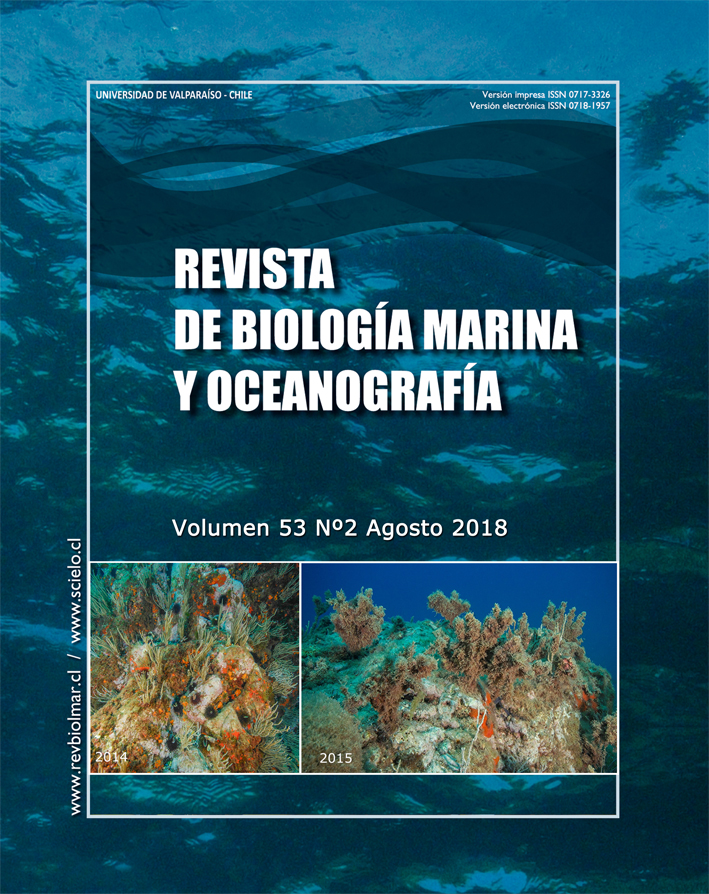Antibacterial activity of marine diatoms isolated from Acapulco, Guerrero, Mexico
DOI:
https://doi.org/10.22370/rbmo.2018.53.2.1293Keywords:
Chaetoceros curvisetus, Asterionella japonica, Biddulphia mobiliensis, secondary metabolites, phytochemical profileAbstract
Marine diatoms synthesize and secrete a variety of secondary metabolites with potential applications in the pharmaceutical industry, however their study is still limited. Therefore, the objective of this work was to isolate and culture the species Chaetoceros curvisetus, Asterionella japonica, and Biddulphia mobiliensis from Santa Lucía Bay in Acapulco, Guerrero, Mexico, as well as to determine the antibacterial activity against bacteria of clinical importance and the analysis of qualitative phytochemical profile of their extracts obtained. Biomass yield was 219.62 ± 0.99; 151.12 ± 1.41, and 109.04 ± 1.48 mg for C. curvisetus, A. japonica, and B. mobiliensis, respectively. Hexane, dichloromethane and acetone extracts were obtained for each species and the qualitative phytochemical profile indicated that these marine diatoms were rich in essential oils, alkaloids, and terpenes. C. curvisetus extract was observed to possess the highest antibacterial activity with Minimum Inhibitory Concentrations (MIC) between 0.5 and 2 mg mL-1 for ATCC bacteria, and 8 and 16 mg mL-1 for E. coli BLEE-producing strains.Downloads
Download data is not yet available.
Downloads
Published
2018-08-30
How to Cite
Nájera-Arce, C., Álvarez-Fitz, P., Pérez-Castro, D., Toribio-Jiménez, J., & Castro-Alarcón, N. (2018). Antibacterial activity of marine diatoms isolated from Acapulco, Guerrero, Mexico. Revista De Biología Marina yOceanografía, 53(2), 195–207. https://doi.org/10.22370/rbmo.2018.53.2.1293
Issue
Section
Article
License
• Los autores que publican en la RBMO transfieren sus derechos de publicación a la Universidad de Valparaíso, conservando los derechos de propiedad intelectual para difundir ampliamente el artículo y la revista en cualquier formato.
• La RBMO autoriza el uso de figuras, tablas y extractos breves de su colección de manuscritos, en trabajos científicos y educacionales, siempre que se incluya la fuente de información.





